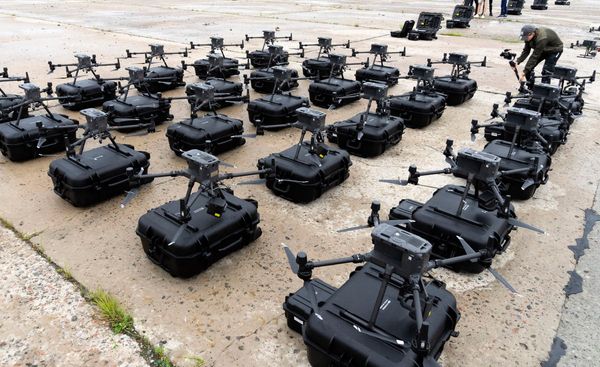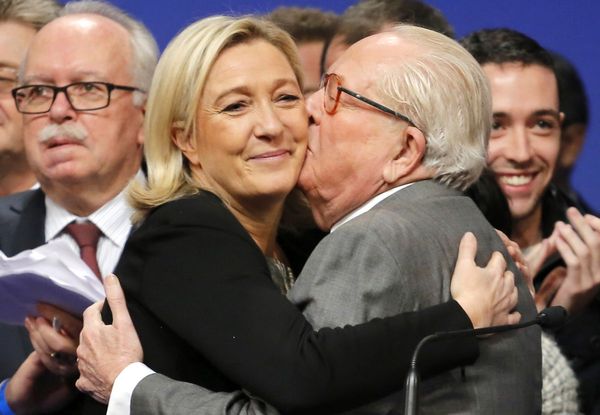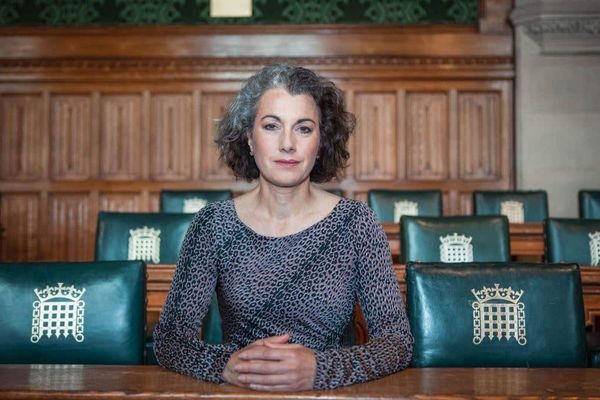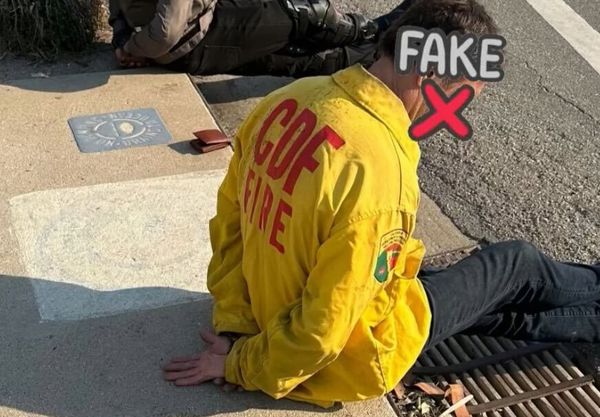This time two weeks ago the threat of a Russian invasion of Ukraine remained hypothetical. Yet the grim escalation of war between Moscow and Kyiv is now devastatingly real.
Soldiers on both sides have become casualties, along with hundreds of Ukrainian civilians, as Russia’s military bombardment of Ukraine’s historic cities and towns continues, and thousands of families attempt to flee.
For many of us who are only just coming to terms with this new battle zone, the tragic unravelling of peace has come at lightning speed.
Yet conflict between Ukraine and Russia is not new. Tensions have simmered ever since the break-up of the Soviet Union in 1991. In 2014 Ukraine lost the territory of Crimea, with its prized port access, to Russia. And for the past eight years a bitter conflict in Ukraine’s eastern territory of Donbass has left 13,000 dead amid accusations of human rights violations from both sides.
More recently, Moscow has loudly expressed concern that Ukraine would join NATO, removing a strategic buffer between Russia and the rest of Europe.
In its crudest analysis, the goal of Russia’s invasion is to wrest control of Ukraine – an independent state – using force to coerce Kyiv into installing a puppet government that will act as an ally for its superpower neighbour. The endgame is to create a pliant neighbour, much like Belarus which is now acting as a staging ground for Russian troops to invade Ukraine from the north.
So two weeks in, what has happened in the Russia-Ukraine conflict? Here’s a timeline of events to catch you up.
Monday, February 21
Russian troops had been massing on the border of Ukraine for weeks as Western leaders attempted to engage Russian leader Vladimir Putin in dialogue.
On February 21 hopes of a peaceful resolution ended when Putin formally recognised Luhansk and Donetsk, the two separatist regions known together as Donbass, as independent states. Ukrainian president Vlodomyr Zelenskyy posted an official reaction, stating “We are not afraid of anyone or anything”.
Tuesday, February 22
Luhansk and Donetsk both have pro-Russia governments while remaining part of Ukraine.
While international law forbids one country invading another, Russia used the pretext of recognising them as independent to argue the military had been invited in as peacekeepers. The Russian parliament authorised Putin to use military force as US Secretary of State Antony Blinken responded by cancelling a planned meeting with Sergey Lavrov, Russia’s foreign minister.
The US then attempted to prevent Russia financing its invasion by announcing full blocking sanctions on several Russian banks, stopped Russia selling sovereign bonds on US money markets and seized assets owned by oligarchs close to Putin. The US then moved military assets from Germany to the Baltic. And Germany halted plans to use a Russian-owned gas pipeline.
Wednesday, February 23
The EU followed the US in freezing the assets of 351 members of Russia’s lower house, the Duma, as the reality of Russia’s action took hold. Ukraine declared a state of emergency and UN secretary general Antonio Guterres said the world faced “a moment of peril”.
Thursday, February 24
An assault on Ukraine began in the early hours of the morning with troops entering Ukraine from the east into the regions of Luhansk, Chernihiv and Kharkiv as well as by sea to the cities of Odessa and Mariupol. Ukraine’s capital Kyiv was hit with missiles, apparently targeting military installations, as citizens took cover in basements or attempted to flee the city. Casualties were recorded but numbers were unclear.
International condemnation was supported by further crackdowns on Russian banks as the US considered a ban on exporting sensitive technology. Russia’s stockmarket fell 45 per cent.
Ukraine's president Zelenskyy continued posting updates on social media.
Friday, February 25
A UN Security Council resolution demanding Russia withdraw from Ukraine was vetoed as the EU sanctioned Putin and Lavrov. More and more Ukrainians attempted to flee the conflict.
Saturday, February 26
About 100,000 refugees have arrived in Poland and a curfew is imposed on Kyiv. The US offers to evacuate Zelenskyy but he refuses, quipping “I need ammunition, not a ride” before posting a video of himself with other cabinet ministers in Kyiv, a proof of life to end rumours he has fled.
Sunday, February 27
As Russian troops advance towards Kyiv, Kharkiv and Kherson the face strong retaliation from the Ukrainian military. Losses are mounting, with the Ukraine claiming 4,500 Russian soldiers have been killed as well as 150 tanks, 700 armoured personnel carriers, seven fighter jets and 26 helicopters destroyed. Figures are impossible to confirm.
The EU bans Russian aircraft from its airspace along with Russian media channels as a crackdown on avenues for financing are also closed off to Russia and planned business deals wound back.
Monday, February 28
The first round of ceasefire talks are held on the border of Belarus but after five hours they are abandoned without an agreement. In a symbolic move Ukraine applies to join the EU.
And then it’s back to bombs: Russia shells Ukraine’s second-largest city, Kharkiv, killing 11 people in this city of 1.5 million.
Ukraine accuses Russia of targeting civilians and Russia’s UN Security Council representative responds saying “We hear lies and deceit about the indiscriminate shelling of Ukrainian facilities, hospitals and schools … the Russian army does not threaten civilians in Ukraine; it does not shell civilian infrastructure.”
However up to 500,000 Ukrainians are now estimated to have fled the country. The UN General Assembly holds an emergency meeting, its first in decades, and declares diplomacy must remain open. The Rouble falls 30 per cent as the impact of restrictions on international banking, including access to SWIFT, is felt.
Tuesday, March 1
Russian troops continue to mass on the outskirts of Kyiv and missiles strike in the heart of Kharkiv.
US President Joe Biden discusses the conflict in his first State of the Union address but refuses to heed Zelenskyy’s request to impose a no-fly zone with the White House noting the move could draw the US into a direct confrontation with Russia.
Wednesday, March 2
A non-binding resolution is approved by the UN General Assembly that condemns Russia for invading Ukraine but only 141 of 193 members support it. Those that abstained included China.
About 870,000 Ukrainians are now said to have fled the fighting and the US goes after Russian oligarchs in an operation called KleptoCapture.
Thursday, March 3
Russian troops seized the Zaporizhzhia nuclear plant, the largest in Europe. In a worrying development a part of the plant catches fire threatening a nuclear accident 10 times the size Chernobyl. The crisis is averted, but Russia retains control of the site.
Ukrainian refugees hit 1 million and Russia has now launched more than 480 missiles targeting civilian areas and government infrastructure. Ukrainian resistance remains strong. Talks between Russia and Ukraine ended without a ceasefire but instead an agreement to allow civilians safe passage from besieged cities and the EU reached an agreement to allow Ukrainians to life and work in Europe for three years.
The US planned more sanctions that Biden said were designed to choke access to technology as well as cutting off access to the global financial systems.
Friday, March 4
The UN offers to secure Ukraine’s nuclear sites, including Chernobyl which was the site of a 1986 nuclear disaster.
Putin dismisses as fake reports that Russia is bombing Ukraine, where 47 people were killed in the city of Chernihiv, during an interview with Germany’s chancellor Olaf Scholz.
Instead a third round of peace talks is planned as NATO formally rejects Zelenskyy’s request for a no-fly zone. The Black Sea port town of Mariupol announces it is without water and heating and the tally of those fleeing Ukraine tops 1.2 million.
In Russia, access to news sites including BBC, Radio Free Europe, Deutsche Welle and independent Russian media such as Meduza are restricted and a law is approved to penalise “fake news” reports on the conflict with a 15-year jail term. Russian oil giant Lukoil speaks out against the fighting, one of few Russian businesses to criticise the invasion.
Saturday, March 5
Russia promises to allow a humanitarian corridor to allow residents of Mariupol to leave but it doesn’t last long. Later in the day with the city still under fire the evacuation is halted. The city of Chernihiv, 140km from Kyiv, is bombed with explosions lighting up the sky as Russian troops continue to the capital.
However resistance remains fierce. Russia argues that the West is behaving “like bandits” and that the US and Europe no longer dominate the world. Russian gas continues to reach Europe but other business including PayPal and the fashion retailer Inditex halt Russian operations.
Sunday, March 6
Violations of a ceasefire agreement prevented planned evacuations from the port city of Mariupol as Zelenskyy telephoned Biden to discuss financial aid and sanctions. Zelenskyy’s hopes for a ban on Russian oil imports were turned down with Biden fearful of forcing up consumer prices.
Zelenskyy then spoke with SpaceX chief executive Elon Musk to thank him for access to the company’s satellite internet system. Visa and Mastercard stopped doing business in Russia.
But the steady progress of Russian troops towards the Ukrainian capital Kyiv continued from the north and west. Putin states that any nation backing a no-fly zone over Ukraine will be considered an enemy combatant raising fears of a wider war, possibly nuclear, if such a zone went ahead. Around 1.5 million Ukrainians have now fled their country.
Naftali Bennett, prime minister of Israel – which is sitting on the fence and has been moderate in its condemnation of Russia – met with Putin and later Zelenskyy.
Russia's national airline, Aeroflot, stopped all international flights bar Belarus.
Monday, March 7
As the war closes out week two, there are fears the conflict could enter a deadly new phase if Russia changes its military strategy. Australian Prime Minister Scott Morrison has called on China to "demonstrate its commitment to global peace at a 'hinge point in history' ".
Meanwhile, Ukrainians continue to attempt to flee to safety and their leadership continues to hope.
Editor's note, March 16: This article was updated to make Israel's position on the conflict clearer.







